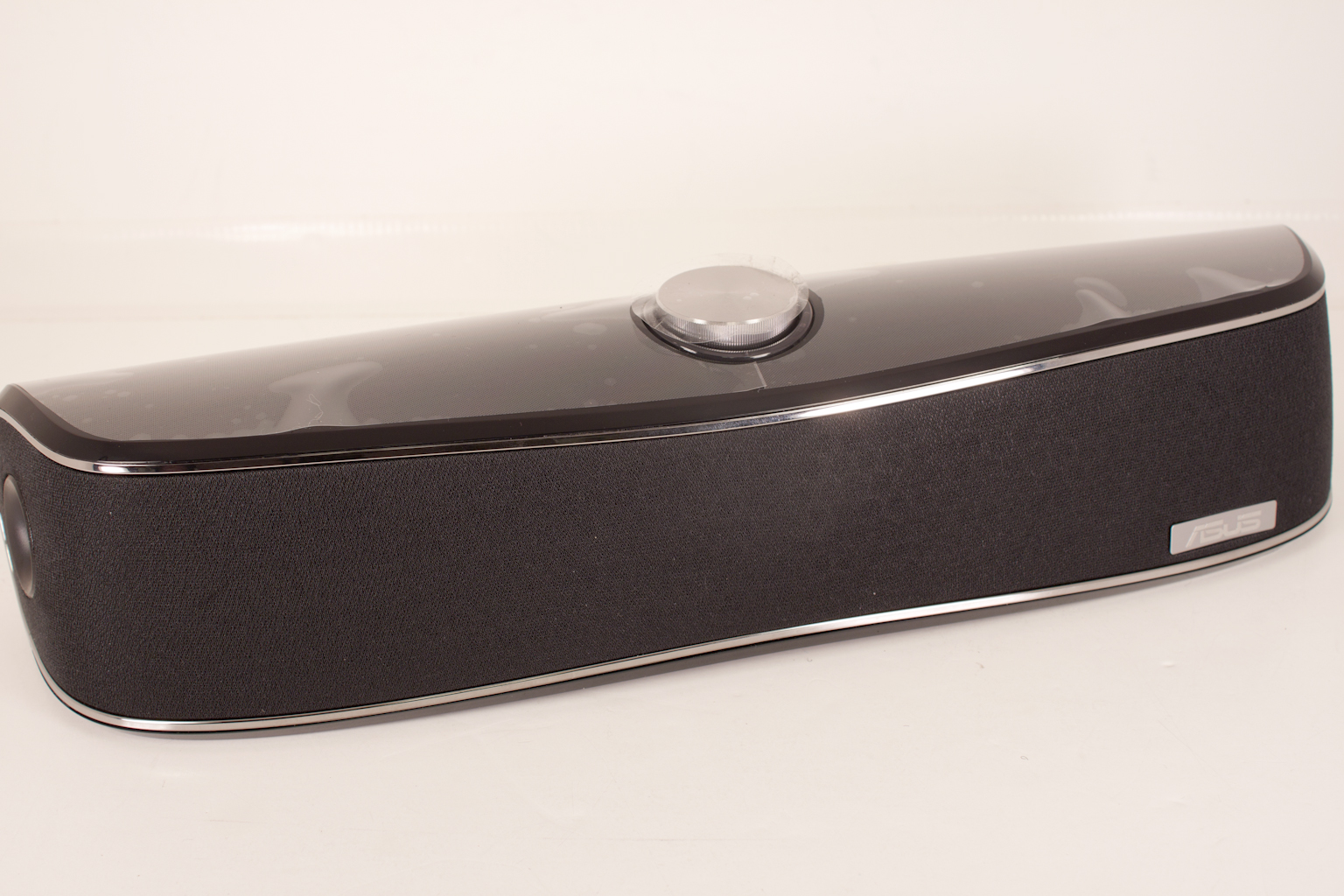The Box and Goodies -
Our first impression of the Cine5 packaging is favorable. It is a clean black box that gives you a hint of the Cine5, explains the basic features and finally gets in one bragging point “world’s most compact five channel speaker”
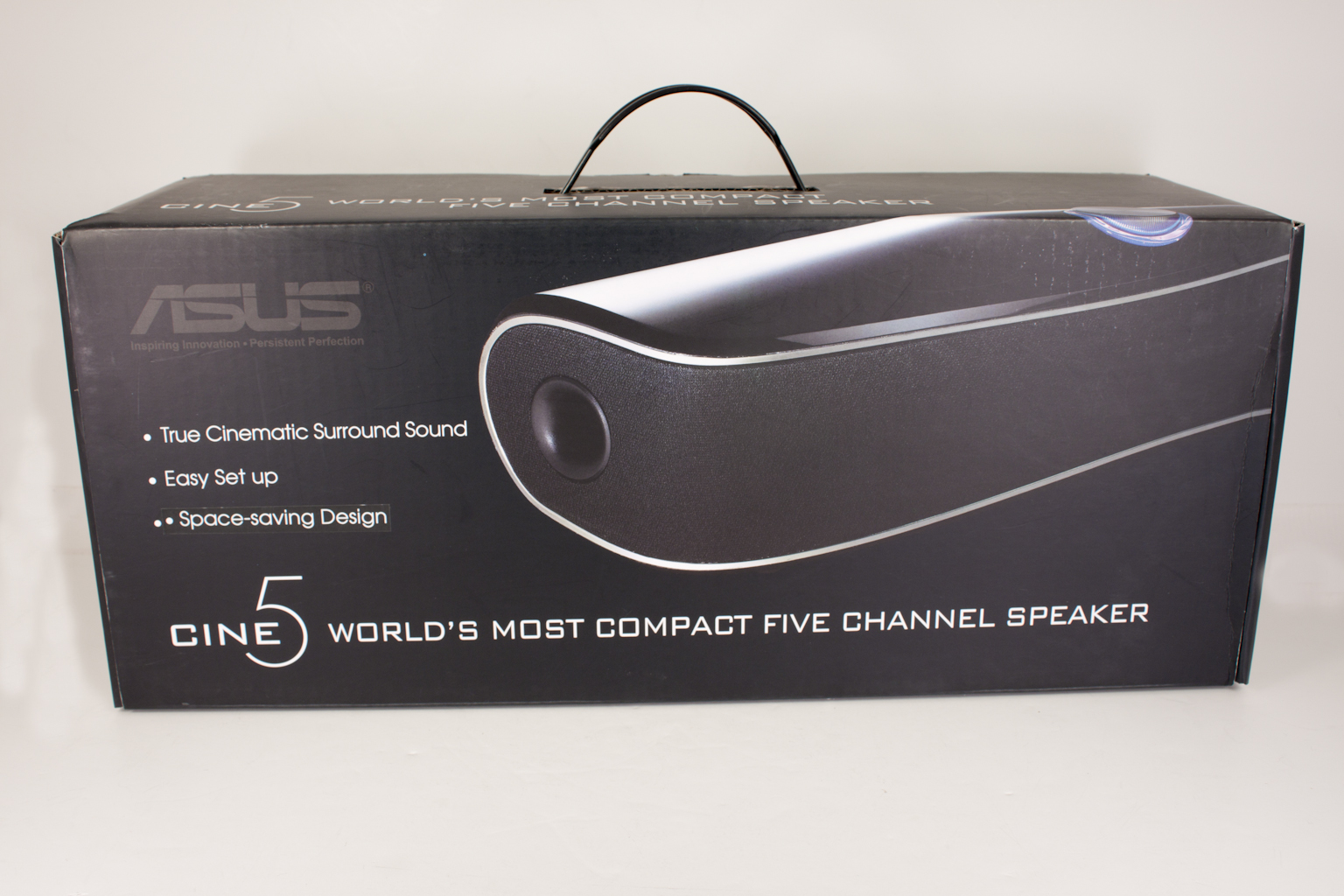 |
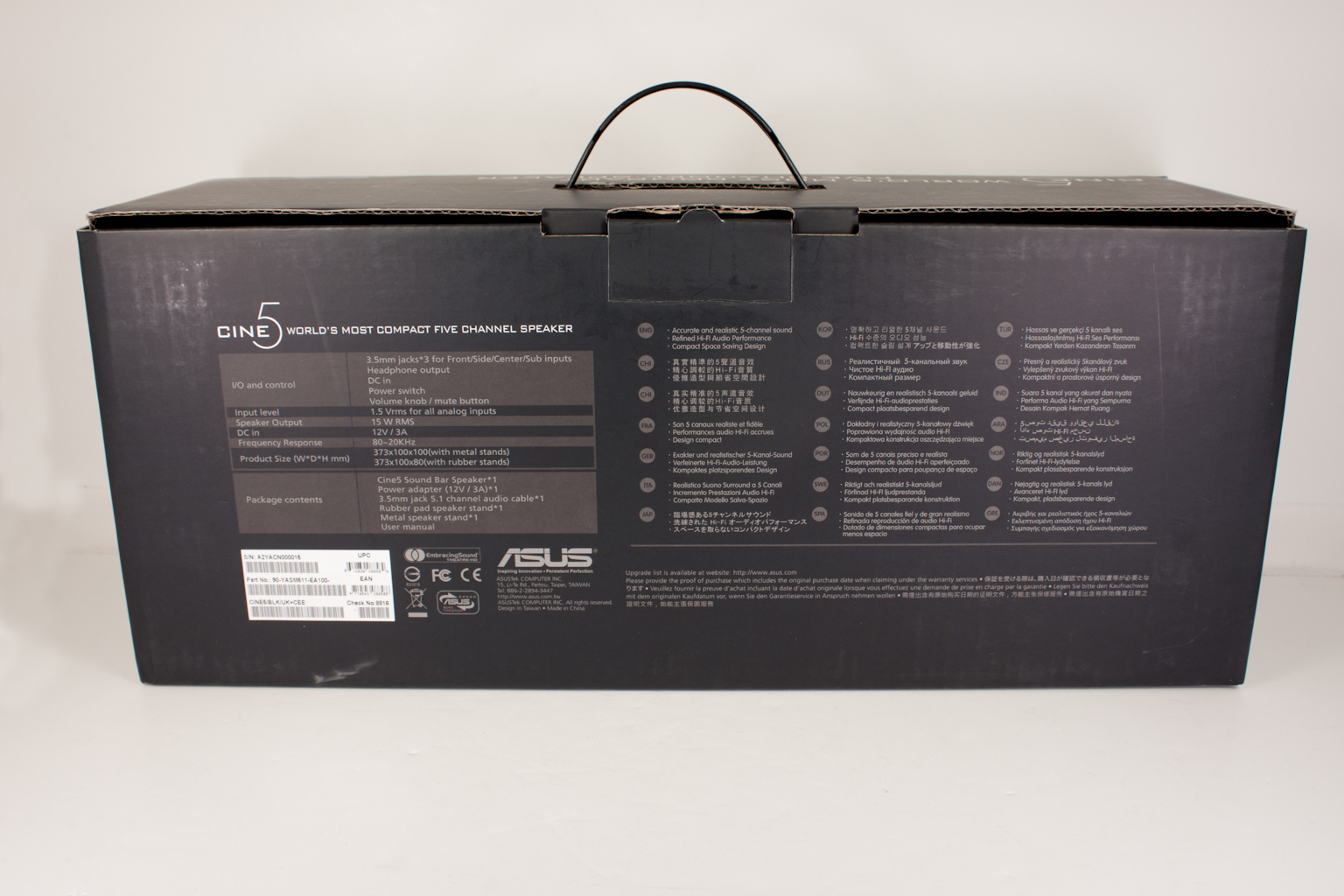 |
The back of the box contains a specification listing and some more information in several languages. There is not much more to talk about with the outside of the box. Asus has made it clean and clear.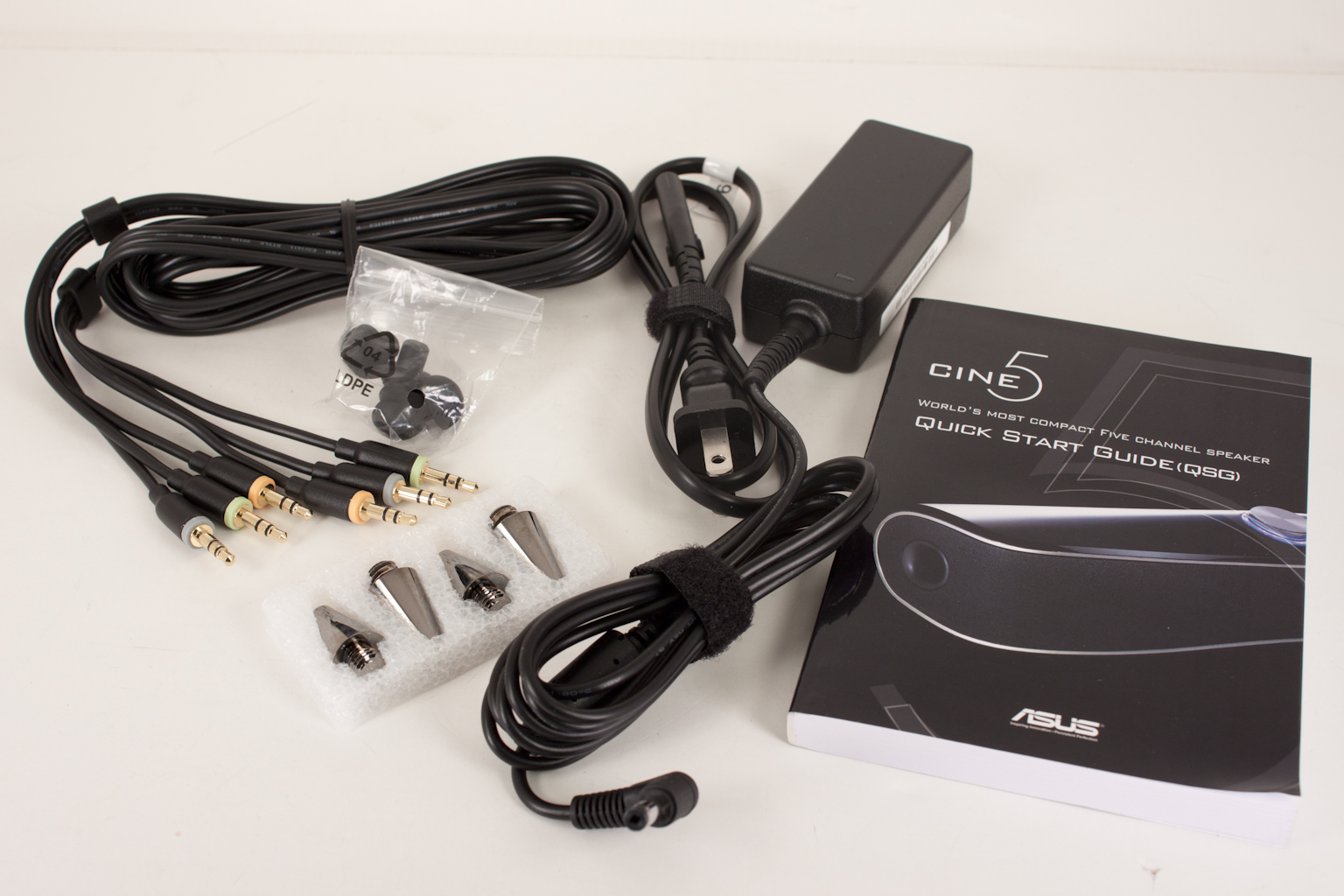
Inside the box Asus has included everything you need in addition to giving you a few choices for how you set up the Cine5. Instead of nailing you down to one style of leg for the Cine5, Asus has thrown in a set of Peg style lags as well as round rubber feet. The peg style legs are metal and have a fair amount of weight to them. This extra weight can be a benefit by reducing the amount of vibration transmitted to the surface the Cine5 is sitting on. On the other side of the coin the softer rubber feet can also reduce vibration but are not as attractive and also (in my opinion) are not as effective,
The Cine5 -
The Cine5 is much smaller than other speaker bars we have worked with before. However, despite the small size Asus has managed to keep in some style. The front features a wraparound cloth cover that hides a honeycomb grill. This cloth is held in place by a slim silver bezel. On each side of the Cine5 is a port that acts like a side firing speakers.
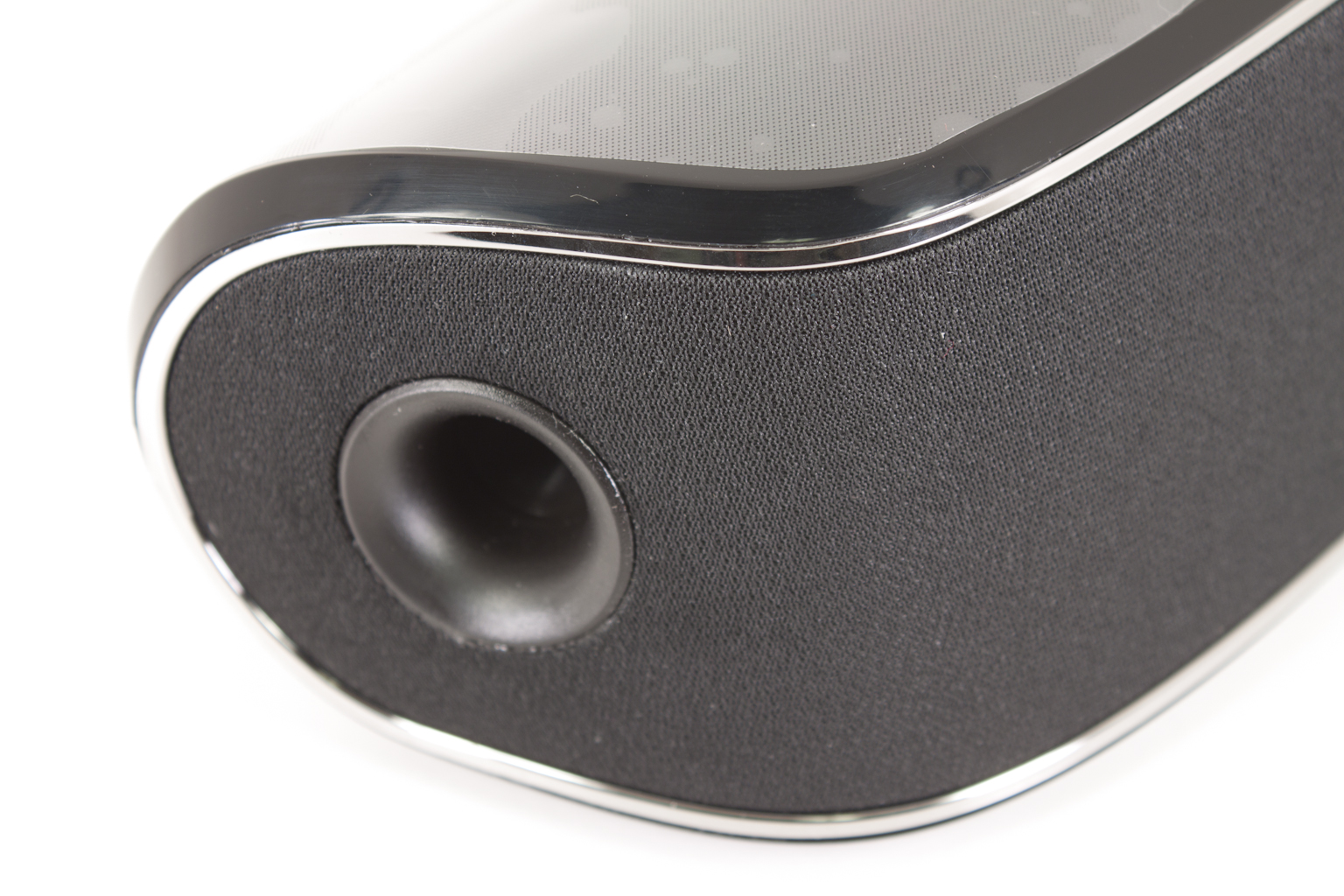 |
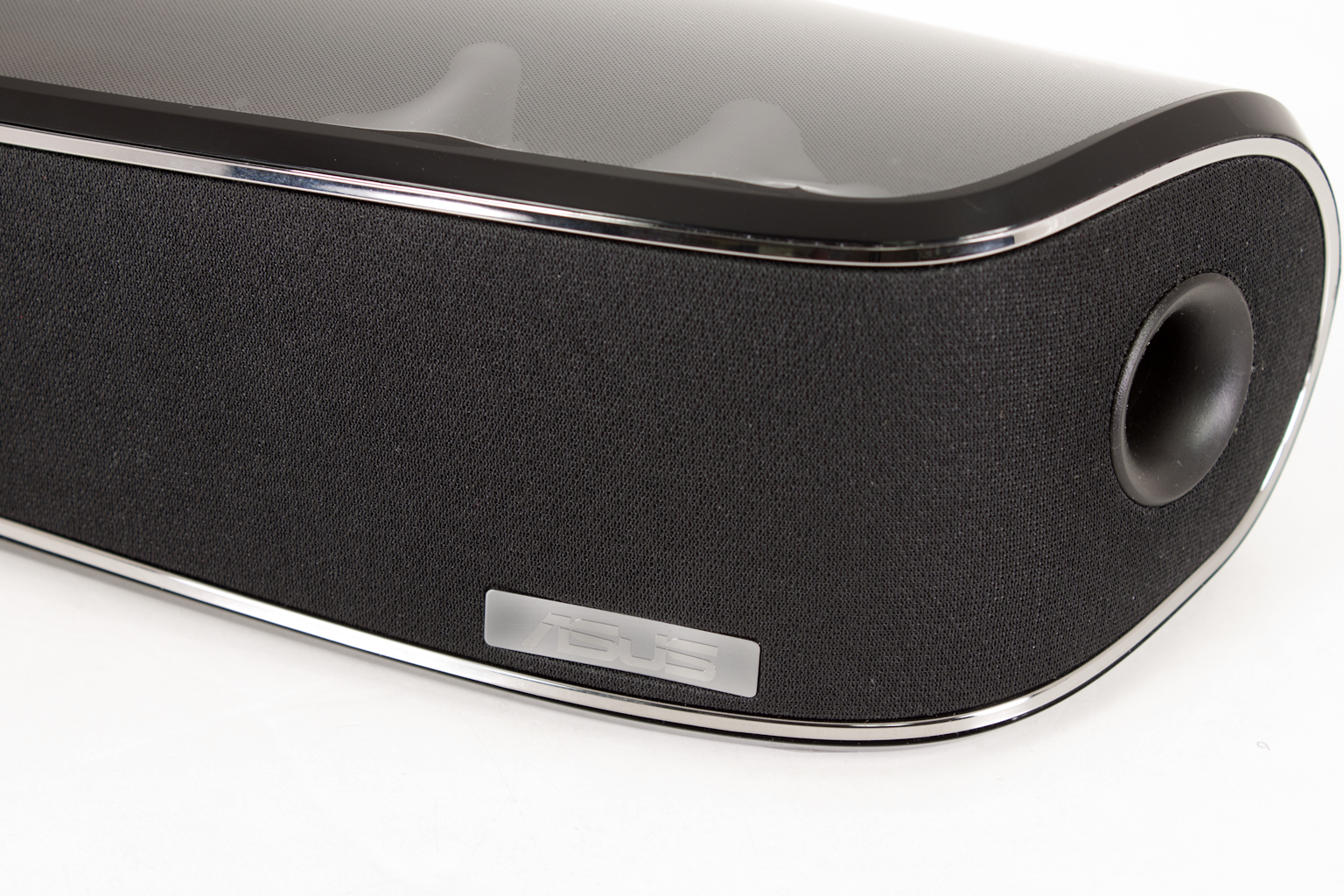 |
On top the Cine5 is the volume/mute button, around this is a blue LED that lights up when you power up the speaker. If you click the volume knob to mute the audio this light goes out.
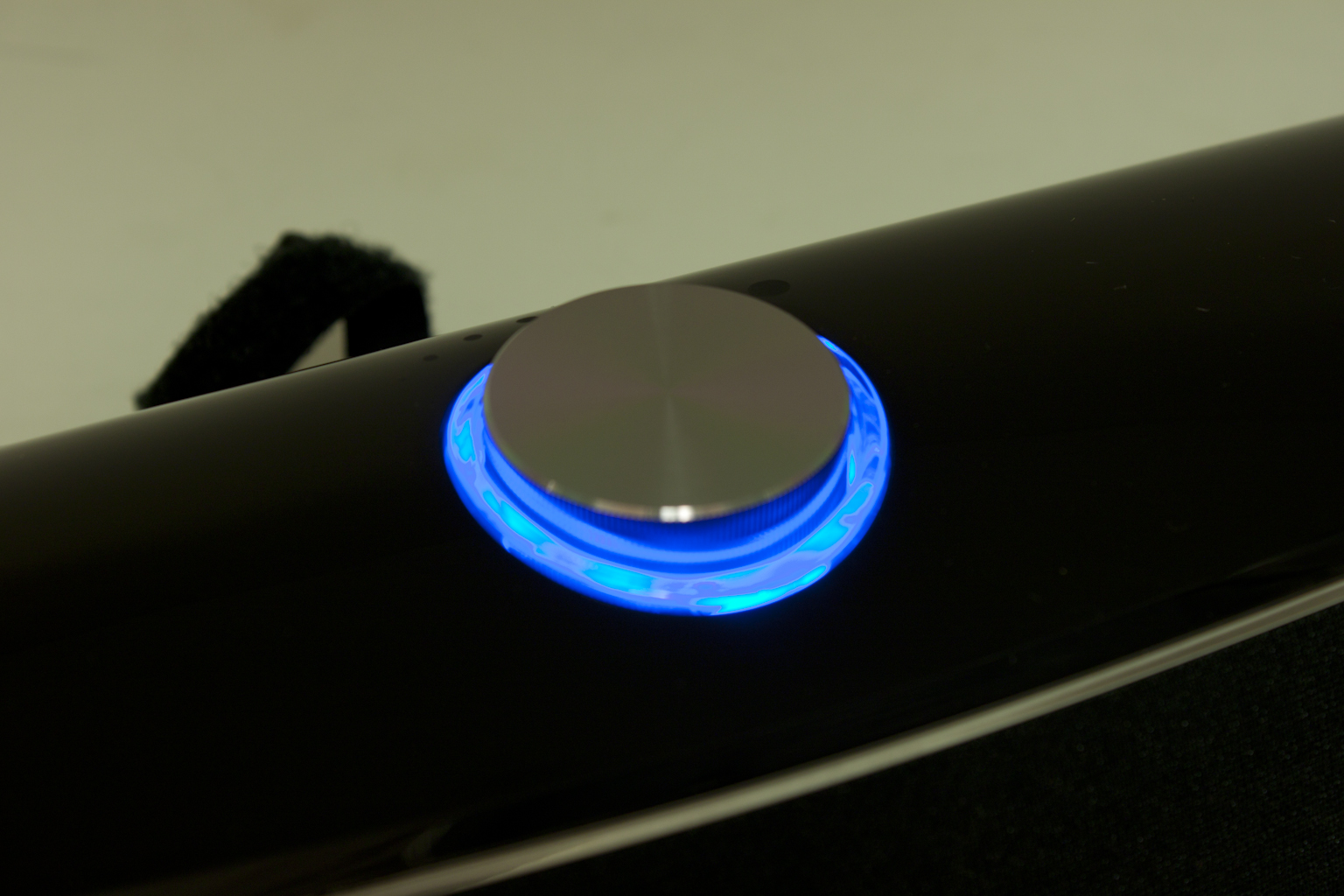 |
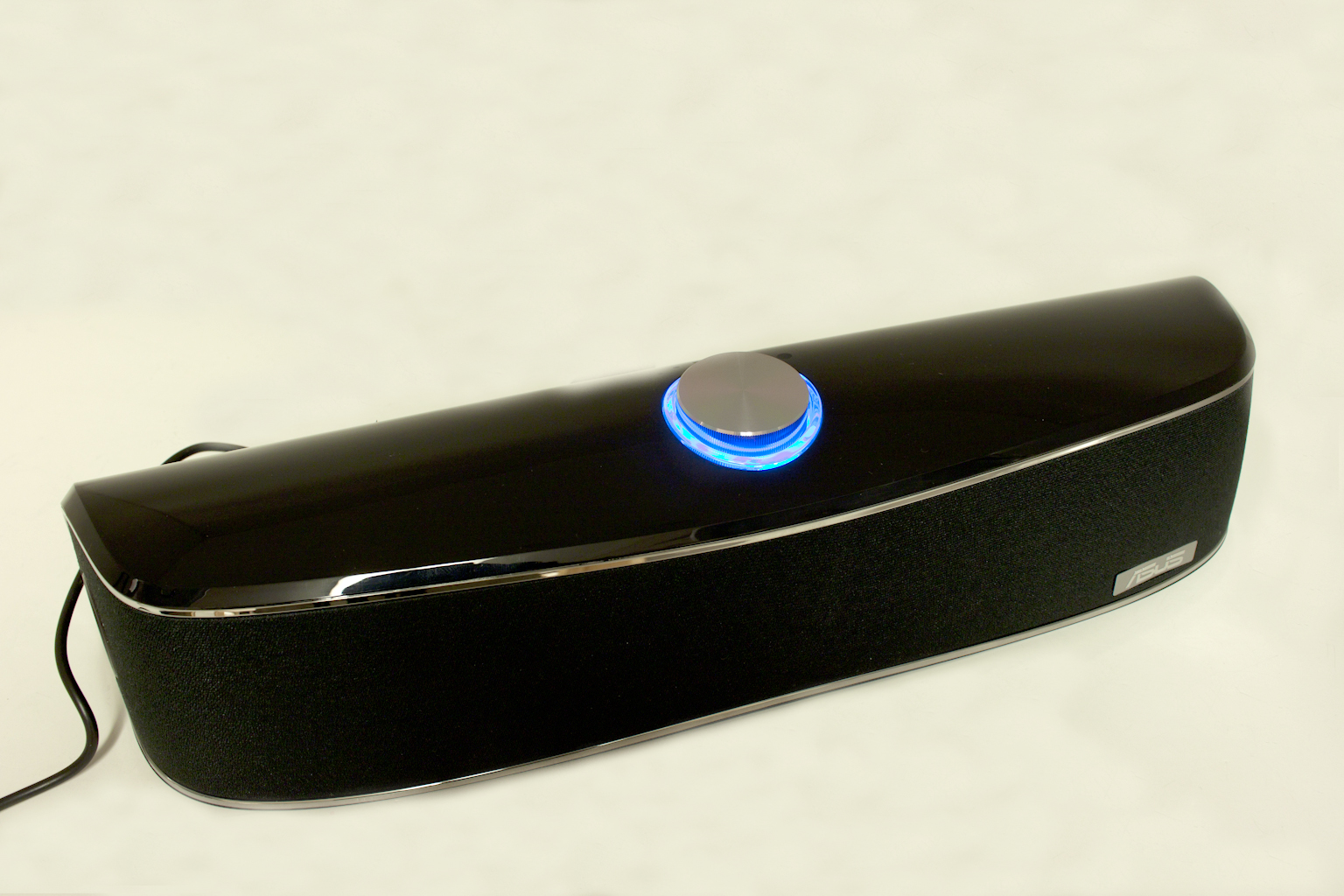 |
The underside of the Cine5 has four brass threaded openings these are for the feet that were included. The reason for the brass fittings is to avoid corrosion and the possibility of rust. Now we would hope that you keep your home theater gear in a cool dry area… but just in case.
 |
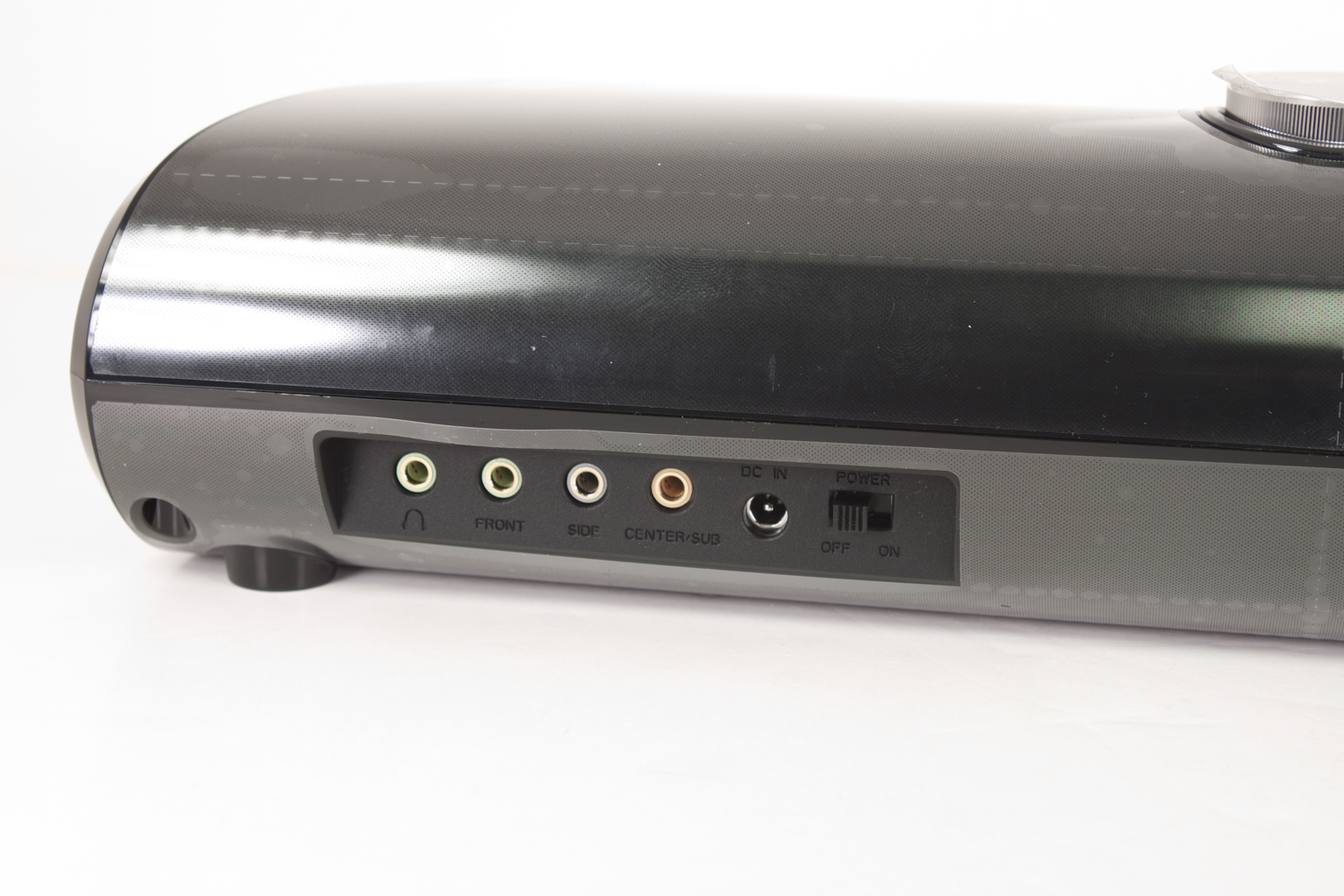 |
Flipping all the way around to the back side we find a panel with three inputs (Front, Side, Center/Sub,) one headphones out and the DC power port. There is a slider switch that controls power to the unit, but as it is in an awkward spot we doubt it will see much use.
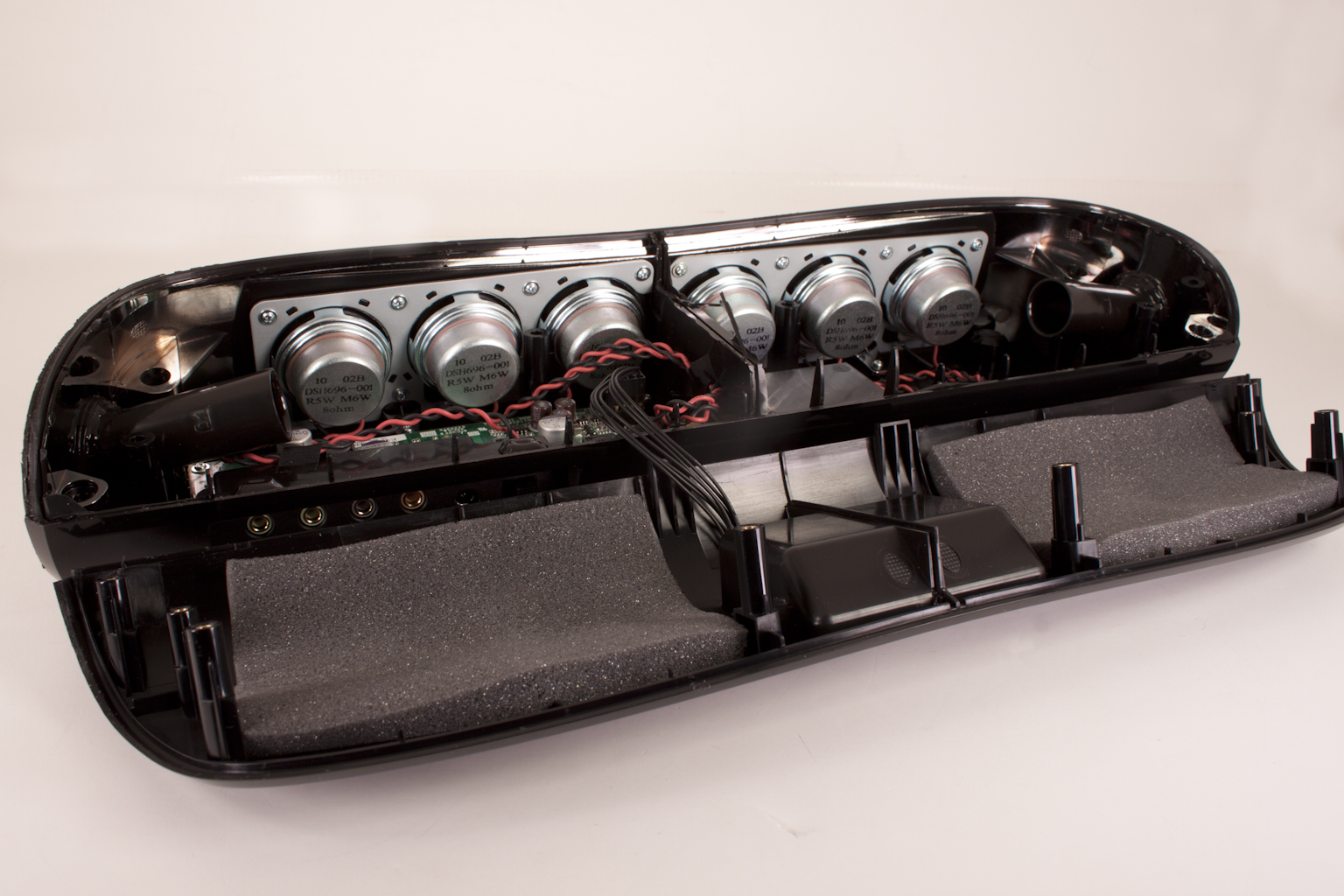
After we completed our testing we just had to crack open the Cine5. The reason we waited until after our testing was to avoid any damage due to breaking open the sealed chambers for the ports. It turns out there are two ports, one on each side that help to provide the directional audio. We were unable to find the manufacturer of many of the parts that male up the Cine5 (at the time of this writing), but the construction looks solid. We do know that there is at least one R450I OP Amp visible when looking inside. This little product is from the folks at Texas Instruments. There is another item that appears to be responsible for signal processing but unfortunately we could not find accurate identification for this part. Likewise the speakers were not to be found by the part numbers listed on them. We only know they are 8Ohms and use a fairly cloth cone.
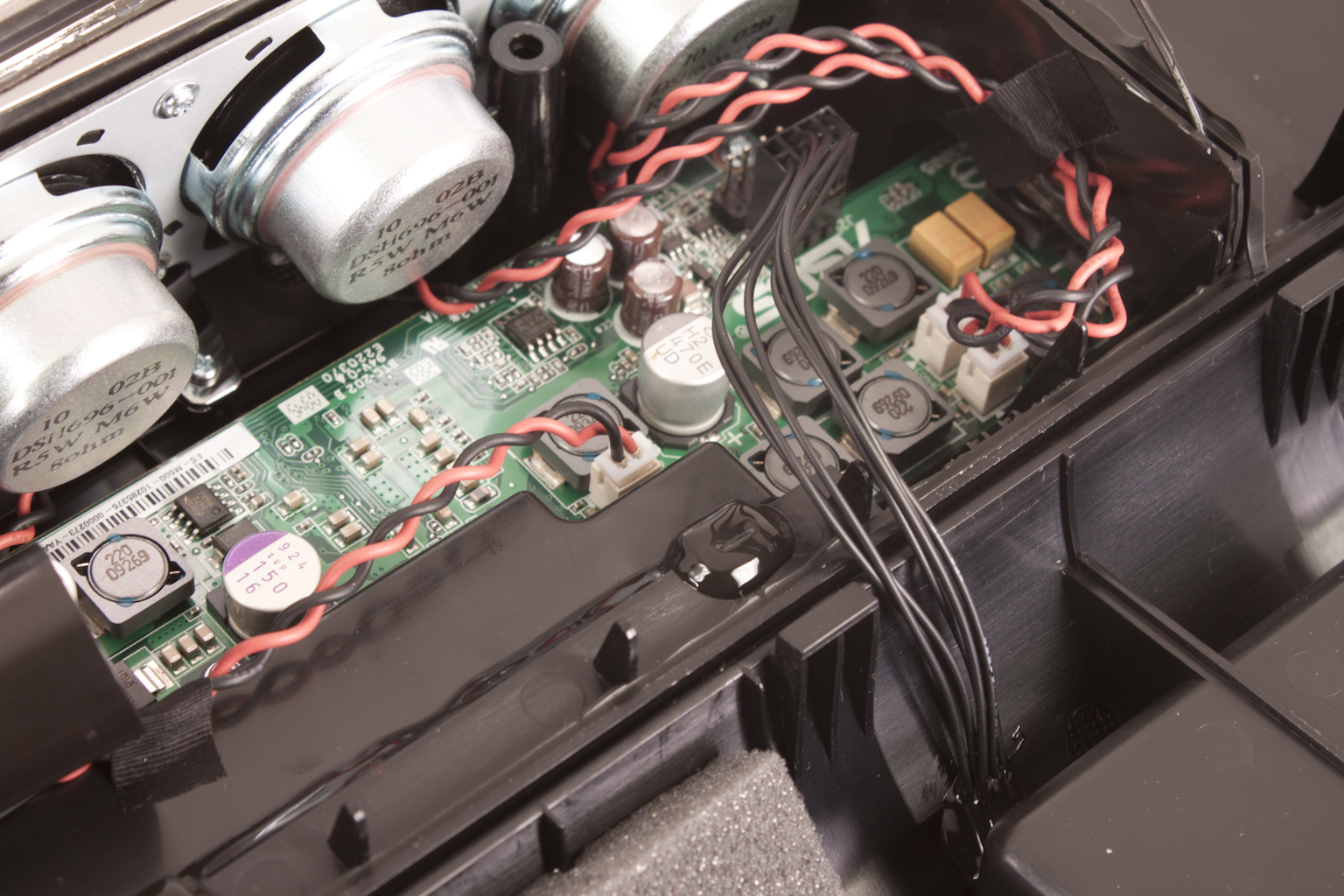 |
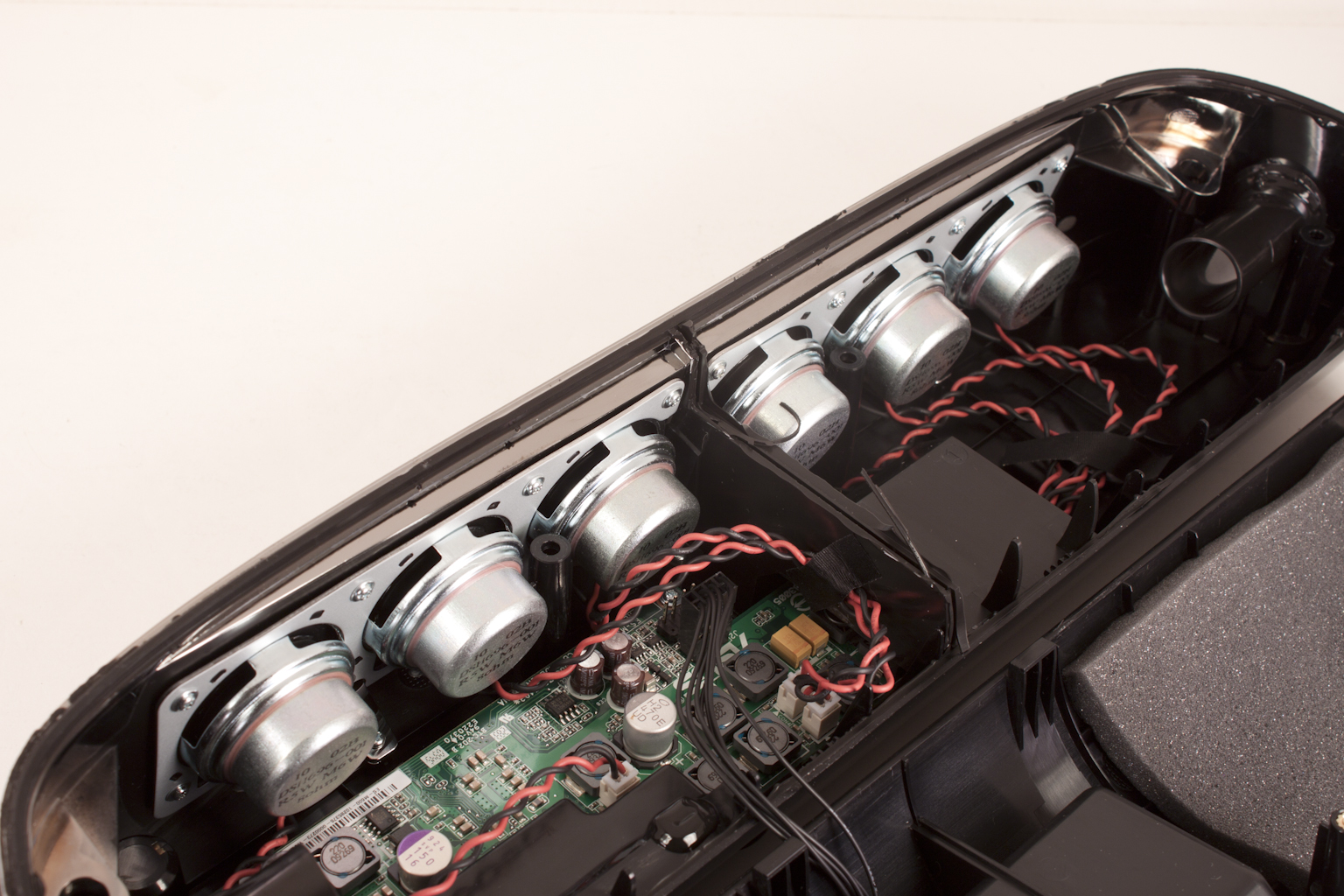 |
The specifications of the Cine5 also tell us something about it before we dive into the actual testing. They are reproduced from Asus’ website below.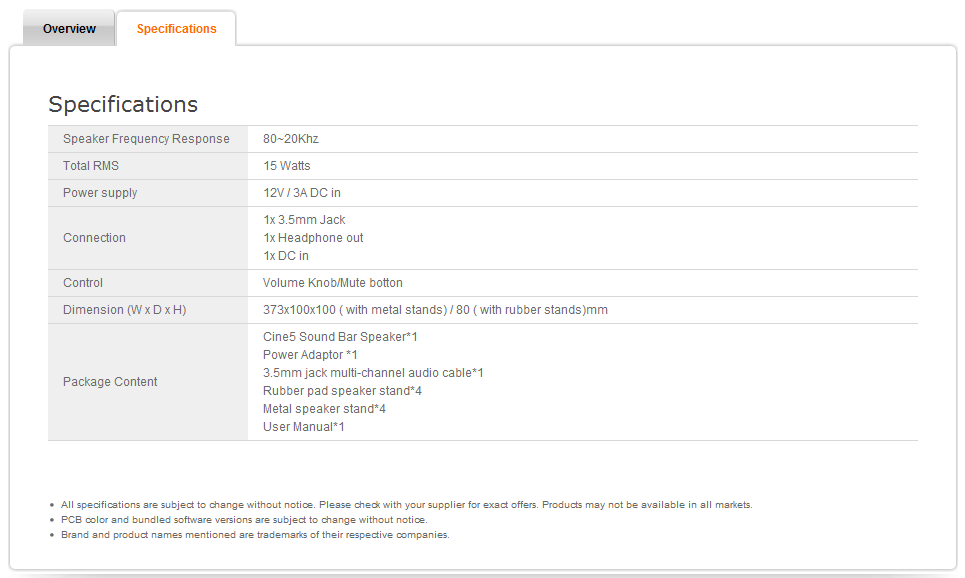
The frequency response range from 80 to 20Khz is not the most impressive available. It means that you may have a slightly tinny sound to your audio. We hope that the dual sealed chambers with their internal dampening and ported structure will help with some of this, but we have our concerns. The listing of a 15Watt RAM rating tells us that this is probably not for larger areas. It would do best in a smaller room (like and office or bedroom). Another aspect we can discern from design and the specs is that this is going to be very directional. Unless our guess is wrong (and we will find out in our testing) there is about a 90-120 degree arc for listening. If you are outside this you are not going to get the same level of audio quality.
The test system and comments -
For our testing I used an HTPC system that consisted of the following components;
Additionally I dropped an Asus Xonar D2X into the single x16 PCIe slot on the AT3IONT-I Deluxe motherboard. I wanted to test this in multiple environments and also with multiple seating arrangements. The three rooms I chose for testing were the living room (15’ 2” x 17’ 11” Vaulted Ceiling with a 10’ 10” peak), My Office (7’ 7” x 8’ 10” x 8’), and a bedroom (14’ 4” x 12’ x 8’) with these three setup I ran the usual gamut of audio. These included Bluray, DVD, MP3 Audio, and even some gaming. I used our normal subjective testing methodology (five test subjects to comment on the audio) for each of the rooms used.
Performance -
As we mentioned very briefly above audio quality is very subjective. What you like I may not. To prevent you from getting only my opinion on the audio quality, we use multiple subjects to get differing opinions on the quality of the audio produced by the Cine5. This time we put each of our subjects into the three rooms and exposed them to the same five audio sources. From there we asked for a rating from one to five (one being the lowest and five being the best) for how good they felt the audio was. We also asked for a single word to describe the audio produced in each room.
The Living Room -
This is a large room with a vaulted ceiling and one open wall. It follows a semi dead/live format with the wall behind the audio having been painted with sound dampening paint (multiple coats). The room has good acoustical properties and works well with the 5.1 surround sound presently installed. We placed the Cine5 directly in front of the 52-inch TV (at the base) and kicked off the tests. The seating area for this is roughly 13 feet from the audio source.
In the large and open living area the Cine5 did not do so well. While the audio was crisp, it was week and very faint. Even with the system turned all the way up most of our test subjects complained that they could barely hear it. It would seem that the small speakers and relatively low 15 Watt RMS output is just not enough to fill this type of room.
The most common words used were; quiet, thin, tinny
The Bedroom -
The bedroom setting represents your typical bedroom, the length and widths are fairly average as the distance to the audio source (about 12 feet). Again we placed the Cine5 near the base and centered on the TV/Monitor. With 8 foot ceilings and no active dampening on the walls the acoustical properties of your average bedroom are usually not that great. You can get some interesting bounces in the audio waves.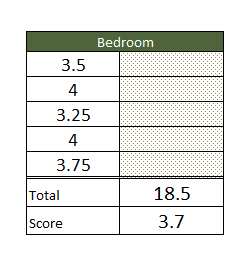
The smaller bedroom setting improves the perceived volume somewhat but most of our listeners still felt it was quiet and thin. This is another time when the size of the speaker bar is working against its design. Here the words used were; clean, quiet, reedy
The Office -
Here we have the smallest of our listening areas. At 7’ 7” x 8’ 10” x 8’ with a dead/live configuration (again acoustic paint) this room could have the best possible options for the Cine5. The distance to the audio source is only 2-3 feet. Once again the Cine5 is right under and centered on the monitor.
The smaller dimensions and nearer listening position make a world of difference. Here everyone agreed that the Cine5 was able to fill up the smaller room with sound. The positional effects were very noticeable as well. We found something else very interesting. When in the two larger rooms there was very little presence (bass) in the audio, in the Office there was much more of a presence and life to the audio. In almost every way the Cine5 performed better in the smaller room and with closer proximity. The words used here changed with the smaller area and were ones such as; Full, Vibrante, Clean, and even cool.
All about the angles –
While we were talking about the specifications and design of the Cine5 we briefly mentioned that we felt it would be very positional. It turns out that we were correct on that score. The Cine5 has a roughly 100 degree listening angle. If you are outside this the positional effects are not present, the audio can still be very good, but the 5.1 effect is lost. The sounds all seem to blend at that point. It is pretty dramatic to be honest. A 6-12 inch shift can make the difference between 5.1 and stereo.
General Performance -
As we have mentioned the placement of the Cine5 matters; you will want to center it on your monitor or TV and make sure that your listening position is between 3-6 feet from the Cine5 and within a 100 degree arc. Inside this envelope the Cine5 does an excellent job of producing full, live and vibrant audio.
Value -
The Cine5 has a price tag of around $130. This is not that bad of a price when you consider that most other 5.1 surround sound systems in this wattage range will cost this and often more. The size if a benefit to those that are space limited while the design and construction show the Cine5 is a quality product. The dual vented chambers are sealed well enough to make the ports effective but are not overdone either.
Conclusion -
There are lots of things I can say about the Cine5. That it is a nice piece of audio hardware for small rooms and for close viewing is one, the other is that there are a few items missing that would make the Cine5 a much better product. One of these missing items is digital input; by adding either Optical or Coaxial digital input, the Cine5 would have a leg up on most computer speaker systems. It would also allow for a single cable to connect the speakers to your output source. This leads me into the second missing item, HDMI. With HDMI again Asus would have a product that would almost be singular in the computer audio market. Of course HDMI input would need an output as well. The input would carry the audio to the speaker and the out would continue with the video to your monitor. This is a complex little bit of hardware and would probably cost too much to implement, as such Asus would have left it out to maintain costs.
Still even without these two items the Cine5 is a good product. You can get some great sound as long as you place it properly and of course combine it with the right audio source. The $130 price tag will be attractive to people looking for a compact speaker system that still gives them wide vibrant sound. We would not recommend it for larger rooms as the Cine5 just does not have the power to fill them up.

